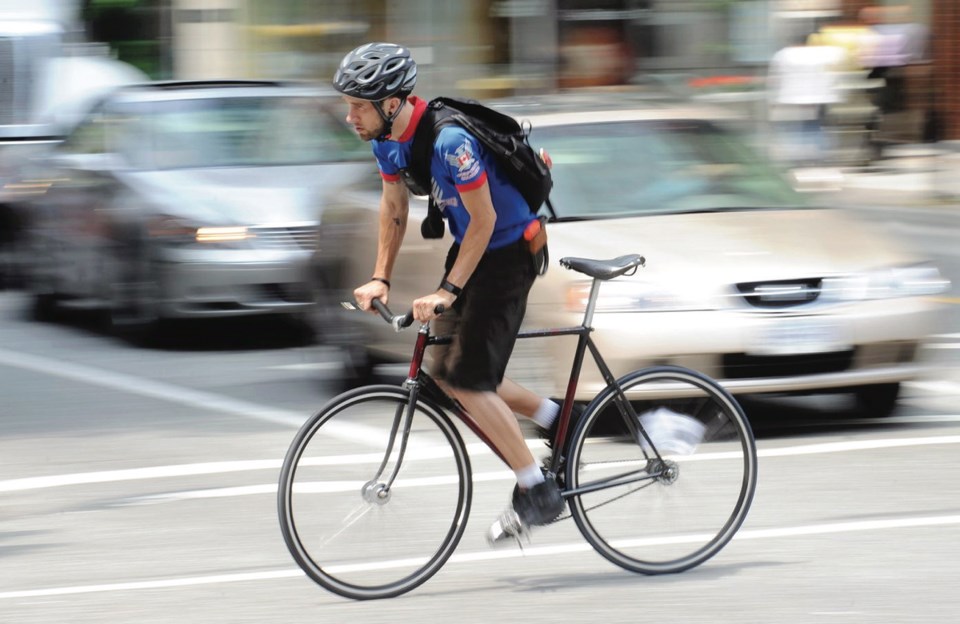Residents of Greater Victoria walk and cycle to work at a rate well above other Canadian cities.
According to 2016 census data, a nation-leading total of 16.9 per cent of the region’s 170,030 commuters are engaged in “active transportation,” with 10.3 per cent walking to work and 6.6 per cent cycling.
No other census metropolitan areas come close to those numbers. Halifax next in line for pedestrians, at 8.2 per cent, while Kelowna has 2.7 per cent of its commuters on bikes.
Victoria Mayor Lisa Helps said she would have been shocked if the region wasn’t tops in walking and cycling. “Yes, it’s good to lead the country, of course,” Helps said. “I’m not surprised — we’re one of the flattest places in the country in terms of cities and one of the warmest in terms of cities.”
Amelia Potvin of the Greater Victoria Bike to Work Society said the region’s climate puts it in a good position to have year-round bike commuters. “That helps build the bike-commuter base.”
Improvements to cycling and walking infrastructure are also making a difference, Potvin said.
Good walking areas are important to a city, said Sally Reid of the advocacy group Walk On, Victoria.
“Our mission is to make Victoria more walkable,” she said. “And with so many people out walking, as we’ve seen in these stats, that makes it more important than ever to make sure that it’s safe and comfortable.”
When it comes to commuting by transit, Greater Victoria is below most of the big cities, hitting 10.9 per cent compared with Toronto’s leading 24.3. Of the six mid-size census metropolitan areas, only Halifax at 11.8 per cent tops Victoria’s transit ridership.
Overall, the share of workers walking, cyclist or using transit — a total of 27.8 per cent — is “way, way, way” lower than Helps would like to see. The City of Victoria’s official community plan, for example, calls for 75 per cent of all trips to be made by transit, walking or cycling by 2041. “And, really, this has huge climate implications,” Helps said.
According to the municipality’s Climate Leadership Plan, to be released next week, 39 per cent of greenhouse-gas emissions come from transportation, she said. And of that, 86 per cent comes from single-occupancy vehicles.
“We’ve got a long way to go, specifically in making transit improvements, so that people have a viable, convenient, cheap alternative to the single-occupancy vehicle,” Helps said. “The game-changer is bus rapid transit all the way to the West Shore and back.”
Victoria Regional Transit System chairwoman Susan Brice said she is hopeful such a service would lead to a jump in West Shore bus commuters. She said a connection to View Royal and Colwood is in the plans.
Brice said there has been a recent boost to the transit system with the addition of 20,000 hours of service — the equivalent of adding 10 buses to the road.
“Ridership has been trending up,” she said.
Bruce Batchelor, who is developing a concept aimed at getting commuter vehicles off the road, said there is “definitely room for improvement” when it comes to commuting in Greater Victoria. His CloseCommute Systems encourages employers to use job swaps and other means to help cut down on commuter times. When commutes become short enough, things like biking and walking become even more viable, Batchelor said.
“The report is definitely highlighting some good aspects with walking and transit and biking,” he said. “The real improvement for many people will come when we can get the long commuters to have shorter commutes.”



